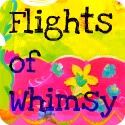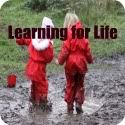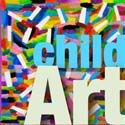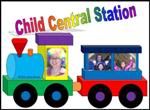Our children love all things gooey. Whether we have ‘teacher made’ gooey substances available or child initiated ‘mud’ and ‘sand’ play, we always have a batch of ‘Ooey, Gooey Gumba’, being made somewhere in the outdoors!
Mikayla and Kaitlyn created the first ever batch of ‘Ooey, Gooey Gumba’ and now it has become a phrase unique to this group of children. It seems to provide them with a real sense of togetherness and belonging.
We always know when a batch is underway as this chant rings through the air:
Ooey, gooey Gumba… Ooey, gooey Gumba… Ooey, gooey Gumba… Ooey, gooey Gumba…
There is something very primal about the children’s chant and one wonders if this might be a remnant of the evolutionary process. Mmmm… something to ponder.
And of course this is what we call ‘Goop’, a mix of water and corn flour. Lot’s of gooey fun and learning!
When goop is left standing over night, the excess corn flour suspended in the water settles to the bottom and solidifies there. Once upon a time I used to dig up this sediment and mix it again before the children returned to use it. OH MY GOODNESS, WHAT WAS I THINKING!!! Now… I leave it to them, and they love it! It certainly builds muscle strength in their little fingers, but most importantly, it results in a lot of discussion.
As the children dig up the solidified goop, it dissolves through their fingers and drips back into the trough below. Callum repeated this action over and over one day, engrossed in observing the process. Eventually he turned to me and said, “Why does it melt?”
Now… how would you answer such a question? There are clearly many options.
Is it an ‘intentional teaching’ moment?
A time to ‘scaffold’ learning?
What exactly do these terms mean?
I could have responded by saying, “Well actually it is not melting…” followed up by an impromptu science lesson on the nature of ‘solutions’ and ‘suspensions’. Eek! Wouldn’t I sound like a know it all?! It might have even made me feel ‘oh so clever’ in the eyes of the child. But such an approach, repeated overtime, could ultimately result in this child losing his confidence and ability to independently ‘problem-solve’. Leaving him like an empty vessel waiting to be filled with information from those deemed to be much more knowledgeable!
How do you nurture a child’s sense of inquiry and exploration?
I could have said, “I don’t know, why do you think this is happening?” This would certainly encourage him to continue searching for a possible explanation, while drawing upon to his own knowledge base. But such a response would be dishonest, because I do know the answer to his question.
How do you respond to a child’s questions with honesty and respect?
Well, I certainly don’t claim to have all the answers here, but I guess you are perhaps wondering what I did say?
On this occasion my response to Callum’s question was, “Do you think it is melting Callum?” Callum responded by repeating the process and offering this explanation, “See… look… it is really hard at the bottom but when I lift it up… look, it just melts!” I replied, “I see it is dripping through your fingers!” Callum responded, “Yeah!”. Then he looked up to the sky and excitedly announced, “I know, the sun must be melting it!”
Well the sun was certainly out, we could feel the warmth of it upon us. So, Callum drew upon his current knowledge base to accomodate his observations. Should I have corrected this misconception?
Is it more important for him to have the ‘right’ answer at this point in time or for him to retain a vision of himself as a capable thinker and problem-solver?
Mmmmm, what do you think?























I’ve always veered between the ‘teaching’, ‘expert’s’ answer, or the ‘what do you think? ‘response, so very interested to read your thoughts on this one.’ Right’ answers are so very over-rated, I prefer the vision of the child as a ‘capable thinker and problem-solver’!